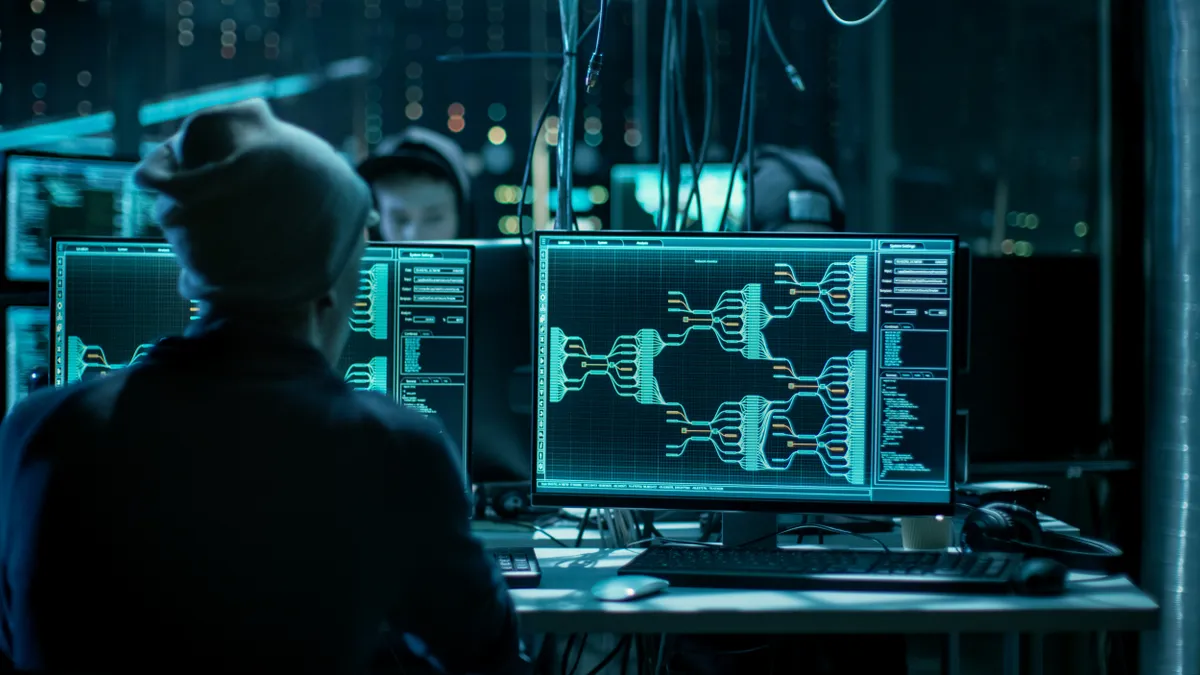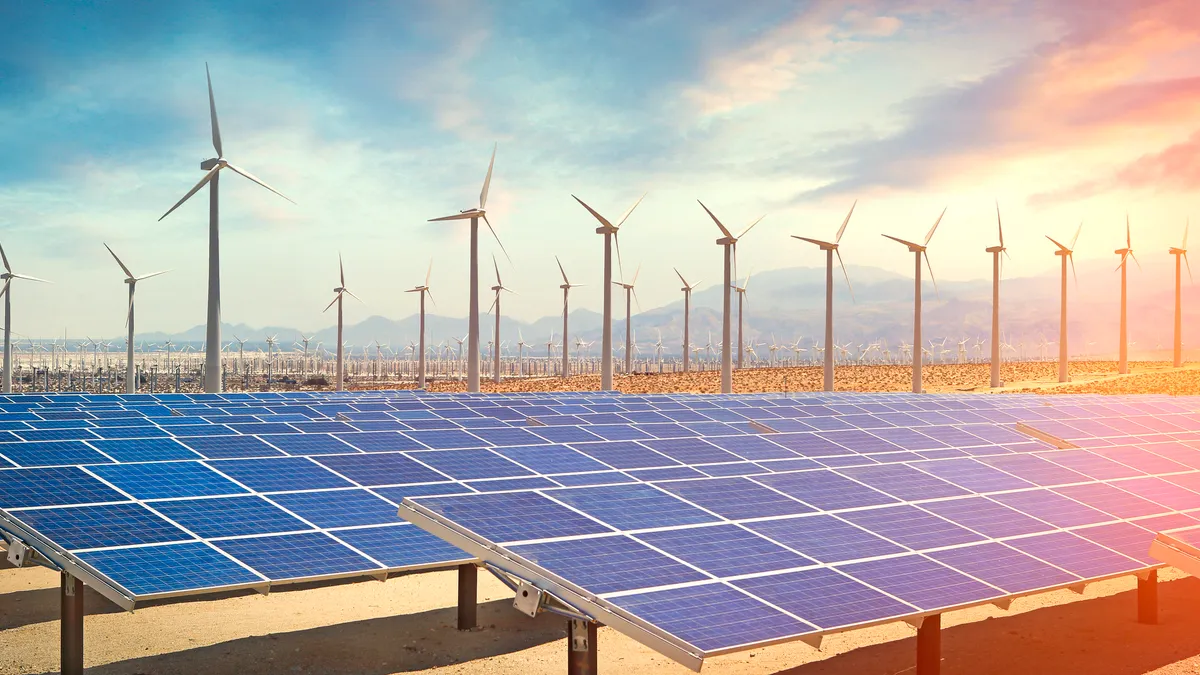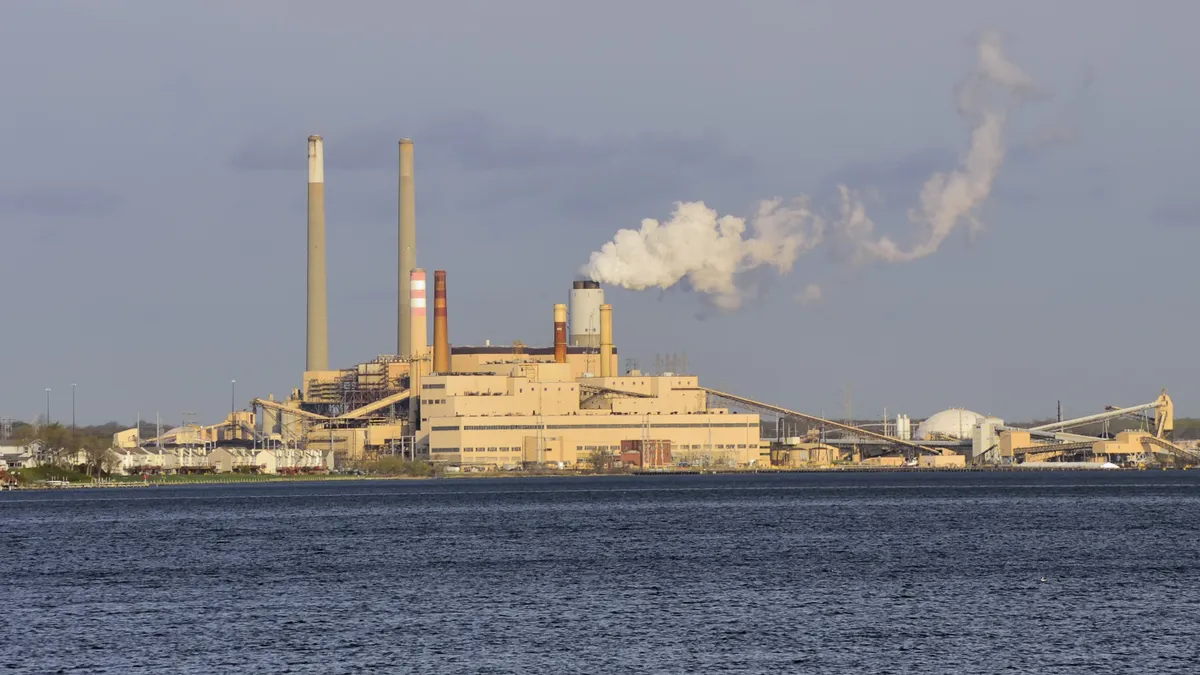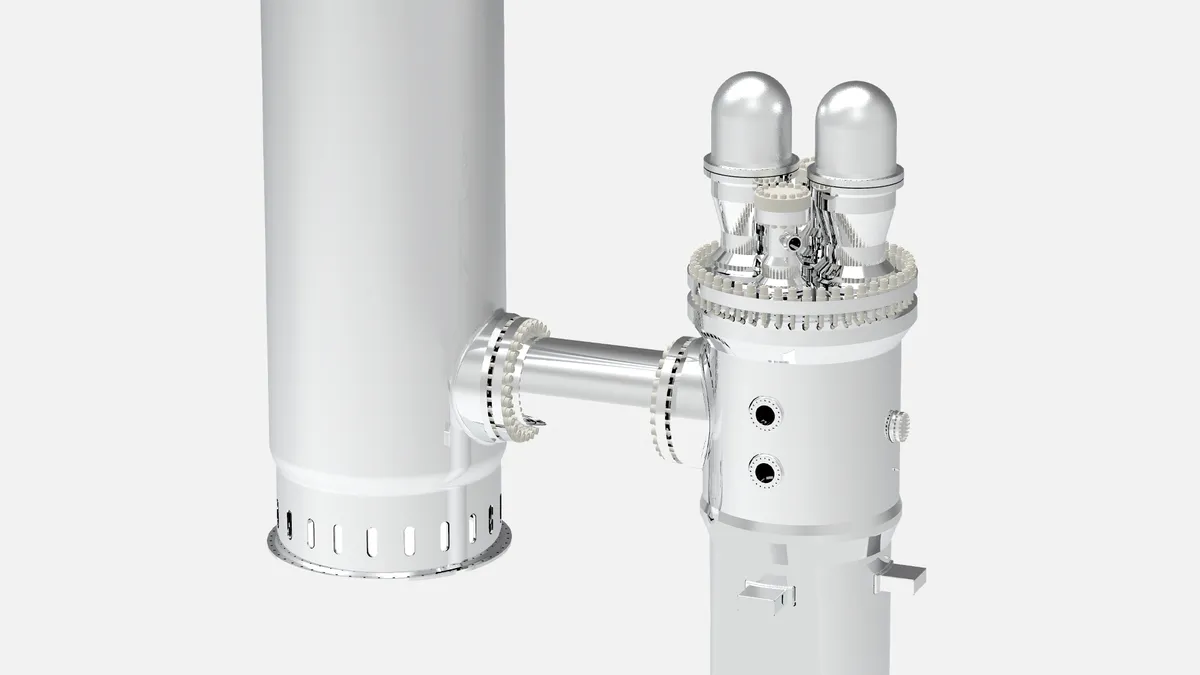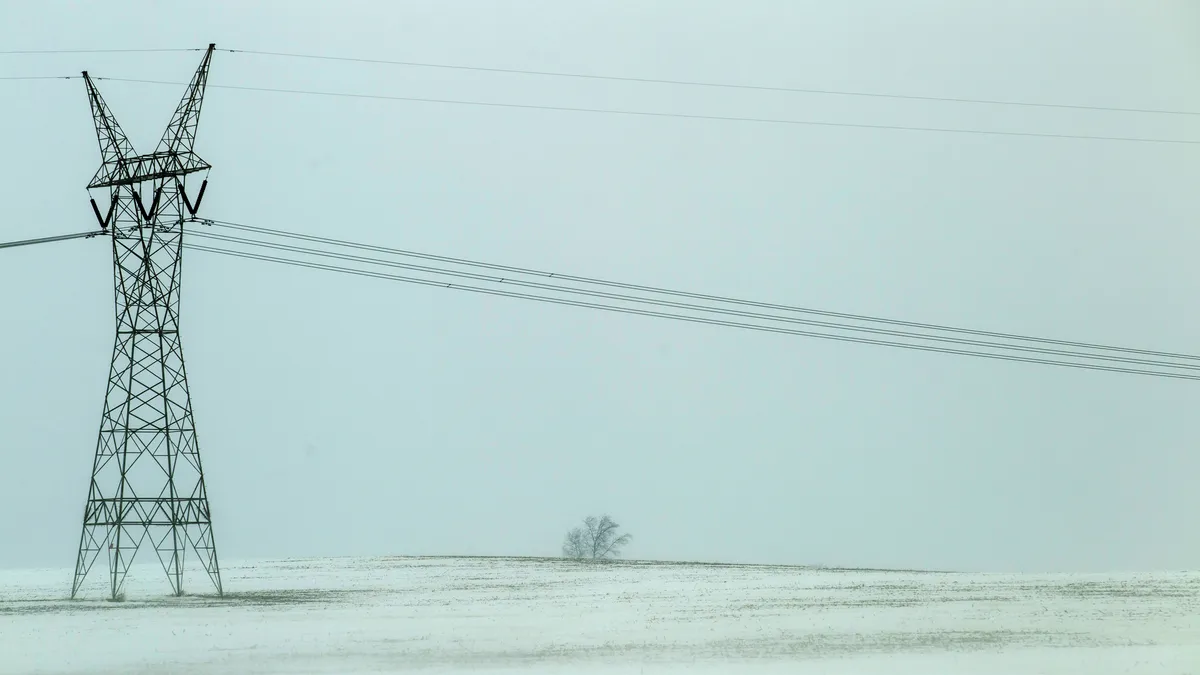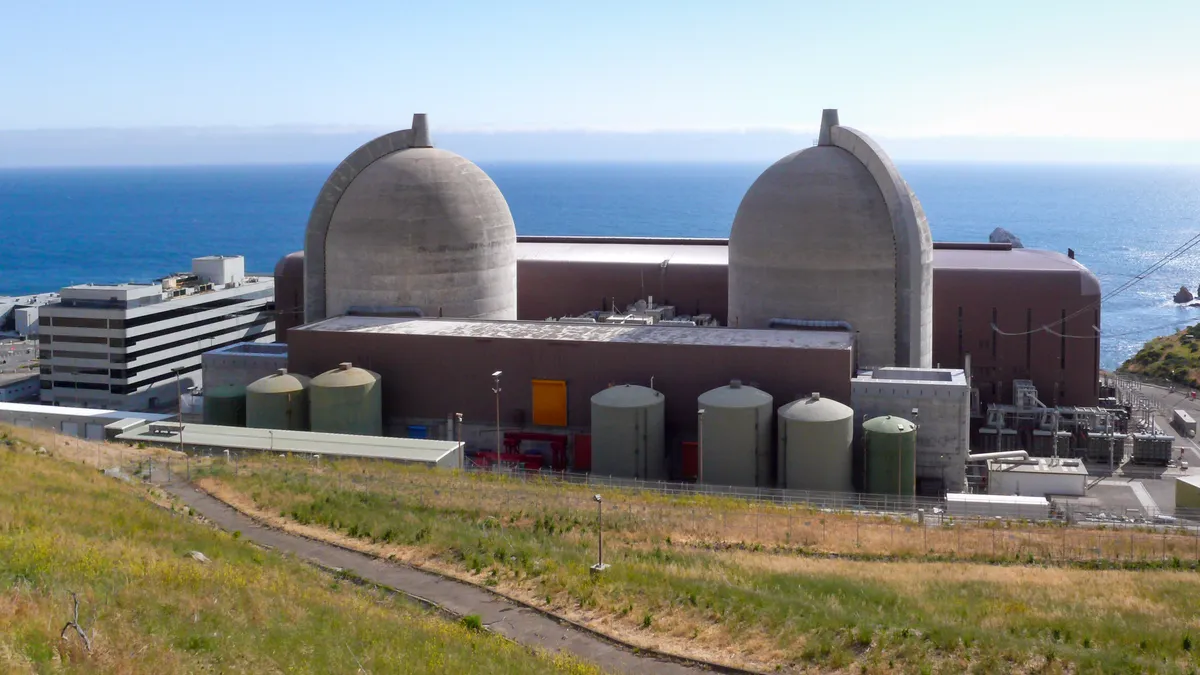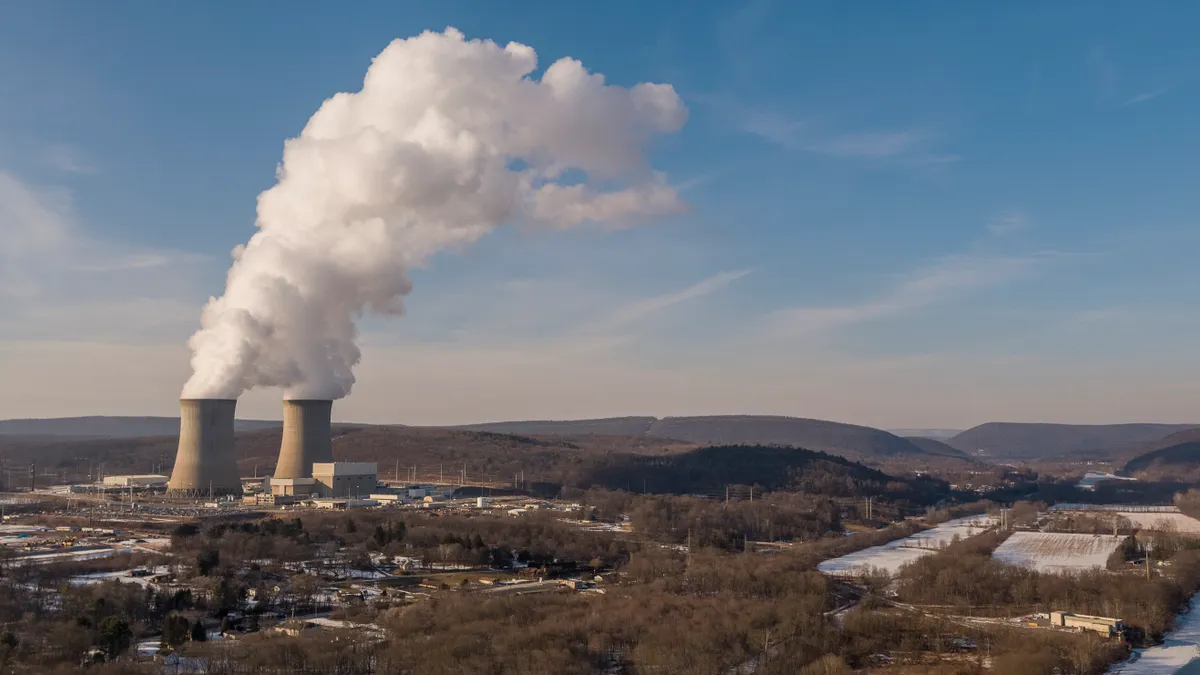Republican presidential nominee Donald Trump was taken to task for his mention of clean coal in the second presidential debate, but there has been no substantive discussion of how well government funding programs for clean coal or other clean energy technologies have fared.
Trump’s online platform does not mention clean coal, and its mention in the second debate was brief: “There is a thing called clean coal.”
Trump’s brevity, intentional or not, may have served him well. It helped him avoid getting bogged down in more complex issues regarding government subsidies and the relative viability of competing clean energy technologies.
When Trump mentioned energy matters in both debates, he put them in the context of a “$20 trillion” national debt with the implicit notion that government money is not being well spent, which harkens back to the old debate about whether or not the government energy policy should pick winners or losers.
In the first debate, Trump said, “We invested in a solar company, our country. That was a disaster. They lost plenty of money on that one.”
No name was mentioned, but presumably Trump was referring to Solyndra, the solar company that went bankrupt in 2011, taking with it a $535 million loan guarantee from the Department of Energy and igniting a political firestorm.
Solyndra was supposed to be a showcase project, the first clean energy loan under the American Recovery and Reinvestment Act of 2009, also known as the stimulus bill, and a signal from the newly elected Obama Administration that they were getting the economy moving again. Solyndra’s failure ended up providing political ammunition for Republicans taking aim at government support for renewable technologies.
Those attacks gloss over the more complex facts of the case. They also miss the commonality between Solyndra and federal support for clean coal.
The Obama Administration granted the loan guarantee to Solyndra, but actual funding for the guarantee predates the stimulus bill. It goes back to a federal loan program put in place under the Energy Policy Act of 2005 to support innovative low-carbon technologies such as solar power and clean coal. That program stalled under the administration of George W. Bush, which did not issue a single loan or loan guarantee under the 1703 program, as it is often called in reference to the applicable section of the 2005 bill.
The stimulus bill added a new section to the loan program, 1705, and allocated $6 billion in funding for “credit subsidy fees” specifically aimed at jump starting the moribund clean energy loan program by supporting commercially viable renewable energy projects. Prior to that, borrowers were responsible for the credit subsidy fee, which in simplest terms is a fee to cover the cost of the loan based on factors such as assessed risk and the cost of capital.
Solyndra originally applied for a loan under the 1703 program for innovative technologies, but was granted the loan guarantee under the 1705 program.
Solyndra was frequently referred to as a solar panel manufacturer, but the company’s “solar panels” were not typical. They were innovative in that they were cylindrical and did not use polysilicon. Solyndra claimed this gave them an advantage in cheaper costs for materials and installation. Those advantages evaporated when Chinese manufacturers began flooding the market with cheap solar panels.
Cleaning up coal
FutureGen was a less publicized but no less spectacular disaster than Solyndra. It was originally conceived in 2003 as a zero emission coal plant that would use carbon capture and sequestration (CCS) technology and would be funded with a mix of public and private money — that is, DOE would not fund the project unless private sector investment reached a certain threshold.
The program was largely stalled throughout the administration of President George W. Bush. In 2008, DOE withdrew from the FutureGen partnership, citing rising cost estimates. The program was then restructured as two or three demonstration projects at different power plants around the country. In 2010, the Obama Administration reinvented the program as FutureGen 2.0 and narrowed its scope to the retrofit of an existing coal-fired plant in Illinois with CCS technology.
The project received $1 billion in stimulus bill funding, but the FutureGen Alliance could not raise the requisite private funding and, in February 2015, the DOE pulled the plug on the project.
The DOE funded FutureGen to the tune of $226 million, but in a 2015 media report, the department said the money was not a complete loss.
“Work to date at the site has proven that the deep saline formation remains a world-class location for geologic carbon sequestration," a department statement said, "and the Department of Energy will retain the rights to use the property acquired at the site for a future storage project.”
The DOE also supports clean coal through its Clean Coal Power Initiative (CCPI). The CCPI has made three rounds of awards, in 2003, 2014, and a two part award in 2009-2010.
The awards cover a variety of technologies, from software integration and lignite enhancement to pollution control technology and full-fledged power plants with low emissions. Of the 18 projects awards, 10 were either canceled or withdrew from the program. Four are complete, and four are active.
In the third round, the DOE made five awards, all for CCS power projects and spent a total of $885 million.
The DOE spent $17 million on an American Electric Power CCS project that was discontinued by the recipient. DOE spent $153 million on the Hydrogen Energy California project before it discontinued funding. The California Energy Commission terminated the project’s permit in March 2016.
The DOE spent $118 million on the Summit Texas Clean Energy, a $2.5 billion, 400 MW project in Penwell, Texas, that had planned to combine integrated gasification combined-cycle (IGCC) and CCS technology. The DOE pulled its funding in May because the developer was not able to attract sufficient private sector funding.
On the plus side are the Kemper and Petra Nova projects. Kemper is Mississippi Power’s IGCC cum CCS project in Kemper County, Mississippi, that is notoriously behind schedule and over budget. The 582 MW plant was originally estimated to cost $2.9 billion. The latest estimate came in at $6.9 billion.
A New York Times article about Kemper clean coal project paints a picture of a project as troubled and just as much of an embarrassment for the Obama Administration as was Solyndra. Southern has disavowed the article's findings.
Not every project has seen such difficulties. The shining star in the DOE’s CCS portfolio to date is the $1 billion Petra Nova CCS project being developed by a joint venture of NRG Energy and JX Nippon Oil & Gas Exploration.
The project, which is expected to enter service by year end, is being built at NRG’s W.S. Parish coal-fired plant southwest of Houston and is designed to capture about 90% of the carbon dioxide from a 240-MW slipstream of flue gas.
In contrast with Kemper, Petra Nova is on budget and on schedule. There are some notable differences between Kemper and Petra Nova that help explain that difference and shed light on the potential for clean coal projects.
The most notable difference is that NRG is building the project as an add-on to an existing coal plant, unlike Kemper, which involves building a new power plant, as well as the IGCC and CCS technology for the project. (The developers of the Summit project were also building a greenfield power plant.)
NRG is also using an adaptation of off-the-shelf CCS technology from Mitsubishi Heavy Industries and Kansai Electric Power. Mississippi Power is developing and hopes to commercialize its own TRIG technology for the IGCC portion of the Kemper project.
Petra Nova’s relative success shows that the costs of a CCS project are easier to bear if they do not include a new power plant. But Petra Nova also show that even adding CCS to an existing project is costly. Those costs have to be paid for somehow.
Mississippi Power says the Kemper project will reap $2 billion over the life of the project by selling captured CO2 to Denbury Resources, which would use the gas for enhanced oil recovery (EOR), which pumps CO2 under pressure into oil fields that are nearing the end of their useful life to squeeze out more oil and prolong the life of the field.
The Kemper project would also allow Mississippi Power to use low cost, local lignite from a nearby mine it owns that has at least a 40 year supply of the fuel. In addition, Southern Company, Mississippi Power’s corporate parent, aims to sell its TRIG technology, which it has tweaked to convert lignite into a cleaner burning fuel. About half of the world’s coal reserves are lignite.
Petra Nova has a different strategy for its captured CO2. NRG and its partners are not looking to CO2 sales to recapture revenues. They plan to reap revenues by selling the oil produced by the EOR process. NRG Energy and its partner in Petra Nova, JX Nippon Oil & Gas, are partners with Hilcorp Energy in a venture that will use EOR to produce and sell oil from Hilcorp’s West Ranch oil field on Texas’ Gulf Coast. The cost of the pipeline to ship the CO2 the 80 miles to the oil field is part of the overall cost of the Petra Nova project.
With oil prices at current levels, NRG says Petra Nova will be able to pay its way, but that could become an issue if they fall further.
NRG has identified several of its coal plants where it could also use CCS, including its Limestone plant in Texas and its Cajun coal plant in Louisiana. But at current oil prices those plans have been put on hold.
Economics, as usual
As usual, the real question with new energy technologies is not so much whether or not they work, but if and how they can be made economic. CO2 can be captured, and it can be sequestered, just as surely as sunlight can be turned into electricity.
Judging by the track record of DOE’s Clean Coal Power Initiative, the limiting factor with CCS is how to justify the cost of adding the technology to a new or an existing power plant.
Currently the most viable path for cost recovery is using CO2 for EOR. Location adds some limits in terms of the cost of building longer pipelines that would require more pipe and, possibly, more compressors, but the biggest limiting factor is the price investors are likely to receive for the recovered oil. In the current economic-technological configuration, clean coal and oil are inextricably linked, making CCS hard to justify on an economic basis.
“Clean coal is complicated, and it’s dependent on oil prices,” Dan Reicher, executive director of the Steyer-Taylor Center for Energy Policy and Finance at Stanford University.
It is notable that the CCPI projects that fell by the wayside — FutureGen is a good example — did not fail because of technological problems or, as critics might say, the government picked a loser, but because the projects were not able to attract the needed private sector capital required for DOE funding.
Government, of course, does sometimes pick losers — Solyndra, for example. But at the time few people in the solar power industry expected panel prices to fall so rapidly.
It should also be noted that the DOE’s loan program is not designed to compete with private sector lending institutions. The program is a sort of lender of last resort for risky but promising technologies that are not likely to be funded by commercial banks.
When the DOE’s loan program was set up in 2005, Congress set aside $10 billion to cover losses. Since issuing its first loan guarantee in 2009, the DOE has made 34 loans and loan guarantees, providing $30 billion of support for 30 projects, most of which are either in construction or in operation.
The loan guarantee program has backed nuclear, solar, wind and solar manufacturing projects. The program also includes a segment for Advanced Technology Vehicles Manufacturing, which is designed to produce more fuel efficient vehicles. In all there have been five defaults under the program, two solar manufacturing projects, two advanced automotive manufacturing projects, and one energy storage project.
In a November 2014 report that was widely cited in the media, the DOE said the loan program was in the black, having received $810 million in interest payments against losses of $780 million, or 2.28% of total commitments. (Solyndra accounts for about three-quarters of the losses.)
In a February report that was updated in October, the DOE cited the success of its loan guarantee program, saying it was responsible for breaking through the 100 MW threshold for utility-scale solar PV projects. The DOE says the loan guarantees it provided to the first five solar projects larger than 100 MW demonstrated the technology’s viability and led to private financing of an additional 45 utility scale solar PV projects.
The agency cited the Mesquite 3 solar project in Arizona, which was privately funded but preceded by the 170 MW Mesquite 1 project that received a $337 million DOE loan guarantee.
But in April 2015, the Government Accountability Office (GAO) issued a report saying that the publicized DOE numbers do not reflect the true costs of the program. The GAO says DOE’s accounting does not take into account credit subsidy fees and administrative costs.
Borrowers under the DOE’s loan program have to pay a credit subsidy fee, which is essentially loan loss reserve based on factors such as risk and interest rates. The value of the fee is recalculated periodically to reflect changes to those factors, such as defaults or improved credit scores or changing interest rates. A simple way to think of credit subsidy fees is that they are like points paid on a mortgage.
The GAO report noted that credit subsidy rates averaged about 3.5% for wind projects, 7.2% for geothermal projects, 12.5% for solar projects, and 16.8% for solar manufacturing projects.
Under the stimulus bill – the 1705 program – those fees were paid by the government, except for one loan, to Southern Co.’s Vogtle nuclear plant under construction in Georgia, which was granted under a loan under the 1703 program.
Based on the fees paid, the GAO report says the total cost of the 1705 loan program, which ended on Sept. 30, 2011, is $2.2 billion.
The GAO also notes that the DOE has incurred $312 million in administrative costs, $251.6 million for energy loans and $60.6 million for auto sector loans. Those costs are partially offset by $196 million in fees paid by borrowers. The DOE has revised its fee structure to close that gap, but the GAO says it is too early to say whether the DOE’s actions will be sufficient to offset future administrative fees.
The GAO report includes a response from the DOE, which argues that it has already received $4.4 billion in principal and interest payments and that the credit subsidy costs will continue to decline as loans continue to be repaid.
The GAO acknowledges that the expected costs will fall as the loans are paid off, but even if nothing else goes wrong – there are no further defaults or other problems, such as lawsuits — the costs will never fall to zero because of the underlying cost of capital and the defaults that have already occurred.
“Even if there had been no defaults or adverse risk conditions and every loan was paid in full and on time, the program would incur costs because it paid the full expected costs of the loans, including the costs of capital, which increased federal debt by the amount of the loans,” says Frank Rusco, director of the GAO’s natural resources and environment team. “There is no way in which the program could ever turn a profit.”
Rusco acknowledges that there could be a “benefit to society by providing loans during a recession and financial crisis, as in the 1705 program, or in terms of supporting innovative technologies as envisioned for the 1703 program. But the portfolio DOE has now will never run a profit and will cost taxpayers money.”
Winners & losers
In all, U.S. taxpayers have paid about $2.32 billion under the DOE’s loan program to support 1,500 MW of utility scale solar projects, five concentrating solar power projects, a cellulosic biofuel plant, construction of two nuclear reactors, and further development of electric vehicles.
In the fossil sector, DOE has spent $1.1 billion on its FutureGen and CCPI projects and has two nearly completed projects to show for it, Kemper and Petra Nova, both of which could demonstrate the viability of commercializing clean coal technology, but they could be difficult to replicate at current oil prices.
If there is a winner in this debate, it would be hard to decide based on costs and technological viability without having a view on policy issues such the impact of climate change, the social value of incumbent technologies, or the need for government stimulus to support innovative technologies.
As with any investments in any industry, it seems inevitable that there will be losers and winners. But there is a theory that an informed decision based on a full reading of the facts makes for better policy.




